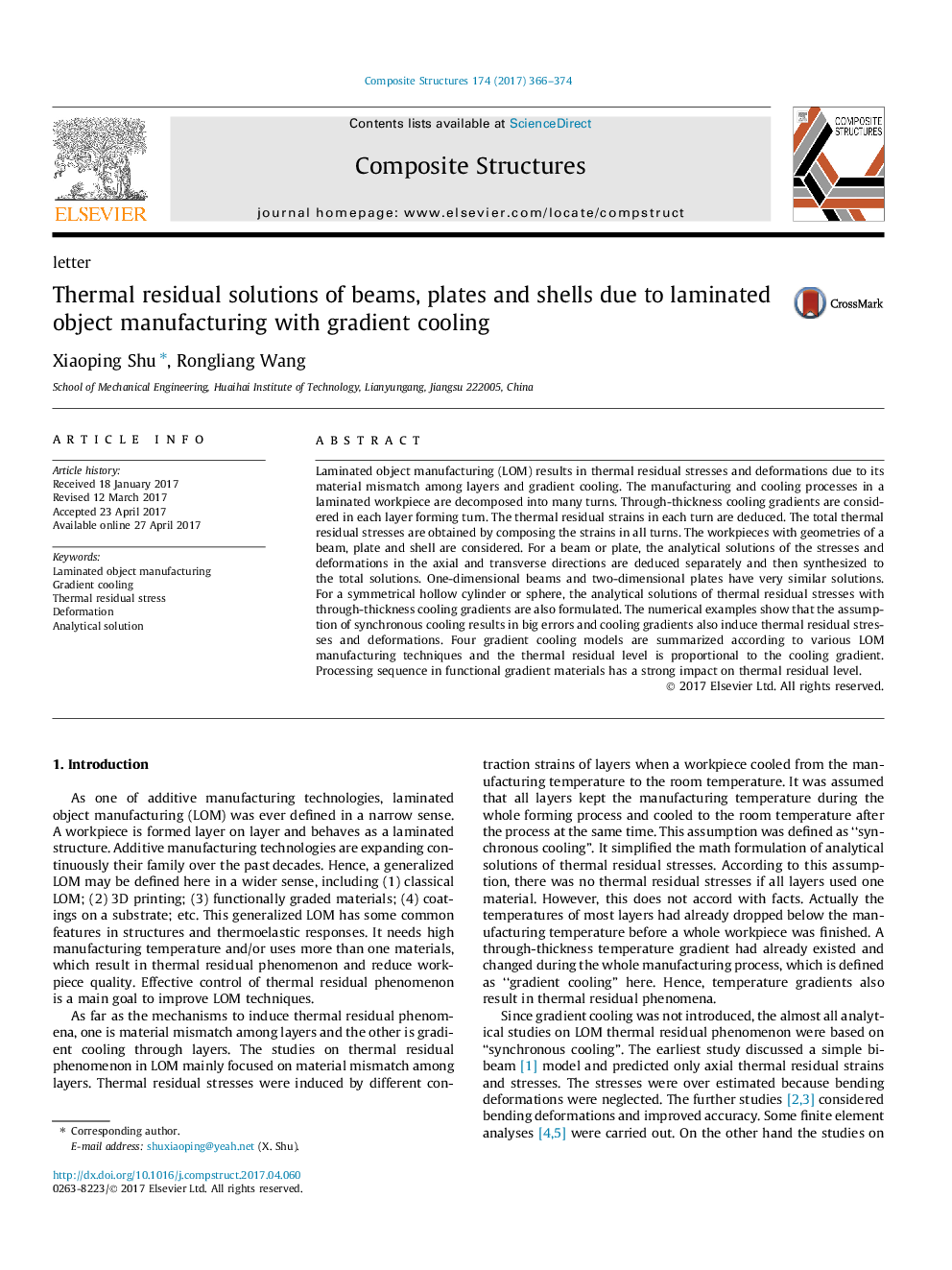| Article ID | Journal | Published Year | Pages | File Type |
|---|---|---|---|---|
| 4912018 | Composite Structures | 2017 | 9 Pages |
Abstract
Laminated object manufacturing (LOM) results in thermal residual stresses and deformations due to its material mismatch among layers and gradient cooling. The manufacturing and cooling processes in a laminated workpiece are decomposed into many turns. Through-thickness cooling gradients are considered in each layer forming turn. The thermal residual strains in each turn are deduced. The total thermal residual stresses are obtained by composing the strains in all turns. The workpieces with geometries of a beam, plate and shell are considered. For a beam or plate, the analytical solutions of the stresses and deformations in the axial and transverse directions are deduced separately and then synthesized to the total solutions. One-dimensional beams and two-dimensional plates have very similar solutions. For a symmetrical hollow cylinder or sphere, the analytical solutions of thermal residual stresses with through-thickness cooling gradients are also formulated. The numerical examples show that the assumption of synchronous cooling results in big errors and cooling gradients also induce thermal residual stresses and deformations. Four gradient cooling models are summarized according to various LOM manufacturing techniques and the thermal residual level is proportional to the cooling gradient. Processing sequence in functional gradient materials has a strong impact on thermal residual level.
Related Topics
Physical Sciences and Engineering
Engineering
Civil and Structural Engineering
Authors
Xiaoping Shu, Rongliang Wang,
